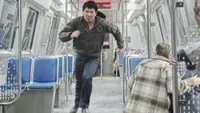A Cruise driverless vehicle on the road in San Francisco. Such robotaxi services have increasingly burdened city employees. — © 2023 The New York Times Company
AT about 2am on March 19, Adam Wood, a San Francisco firefighter on duty, received a 911 call and raced to the city’s Mission neighbourhood to help a male who was having a medical emergency. After loading the patient into an ambulance, a black-and-white car pulled up and blocked the path.
It was a driverless vehicle operated by Waymo, an autonomous car company that Google’s parent, Alphabet, owned. With no human driver to instruct to move out of the way, Wood spoke through a device in the car to a remote operator, who said someone would come take the vehicle away. Instead, another autonomous Waymo car arrived and blocked the other side of the street, Wood said.
Already a subscriber? Log in
Save 30% OFF The Star Digital Access
Cancel anytime. Ad-free. Unlimited access with perks.





